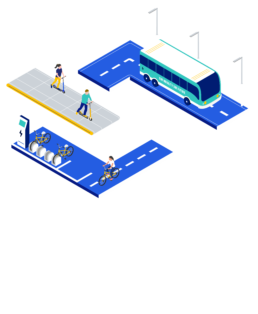Let's move forward - not backwards
The $7.1 Billion Prop A contains two light rail lines. This mode of transit is the most expensive to build and maintain. Worse still, it keeps us stuck in a centralized system that serves far too few citizens as a regular mode of transportation. Our real-world transit needs are distributed and diverse.


The new mobility
Old transit models are in decline
Transit ridership in Texas is lower today than 20 years ago, despite billions in spending and major population growth. As new technologies emerge, people are trending towards on-demand, doorstep-to-destination services. Transit systems that run on a fixed path are becoming obsolete, and light rail is the most expensive form of transportation in the world. Transit agency data show light rail use is declining nationally.
What this means, is that we’re about to experience this profound change to transportation that is distributed, equitable, cost-effective, and convenient: a “New Mobility.”
Innovation
New Mobility ushers in an era of decentralized, on-demand, doorstep-to-destination options. Old fixed-route/fixed-schedule systems like Project Connect cannot compete with the convenience and time savings of the New Mobility.
Equity
Our transit needs are diverse. We need solutions that help all citizens move around our city faster - not expensive rail for the less than 2% of riders who use transit regionally.
Why we're voting NO on Prop A
In November, voters are being asked to approve the greatest debt and tax increase Austin has ever seen: $7.1 billion for the "down payment" of Project Connect, Prop A. This comes during the worst economic and health crisis of our generation, and CapMetro has spent millions of your tax dollars to sell you Project Connect. It is a thumb on the scale of democracy.
Costs Too Much
• 25% property tax increase & cost-of-living increase at a time of economic hardship and financial crisis.
• At over $200 million / mile, it is not cost-effective.
• There are far better uses for the funding that would do more.
• Federal Funding is not a guarantee - in fact it is highly unlikely. Without it, our cost almost doubles.
• Siphons off critical transportation funding for projects that serve more Austinites.
Does Too Little
• Abundant studies show light rail does not fix traffic congestion.
• Will not have any net positive effect on climate change.
• Would serve less than 1% of regional transportation at full ridership by 2040.
• Despite a population explosion and billions invested, public transit in Texas has less riders today than 20 years ago.
• Austinites avoid public transit because of the time consumption and inconvenience.
Obsolete Before Complete
• 19th-century technology proposed to solve a 21st-century problem.
• Disruptive technologies will change the transportation landscape long before Project Connect can be completed.
• More environmentally-effective and space-conscious options are evolving mobility.
• We are on the doorstep of on-demand transportation that makes fixed-route, fixed-schedule systems obsolete.
What you need to know
Transit policy should be driven by demand and data, not politics, hope, and greed. Project Connect is a gravy train for large corporate developers, and transit-oriented development will worsen gentrification and destroy affordable housing along its corridors. The $300M anti-displacement fund in Prop A demonstrates the negative impact this plan will have to those living on the margins.
An Insight into Mobility
Here's where the future of mobility is headed.
Our Position
A deep dive into why we're voting "NO" on Prop A (Project Connect).
12 Reasons to Vote "NO"
A simple explanation designed for sharing.
COVID-19
Our rainy day has come
The current pandemic demonstrates mass public transit is fertile ground for viral transmission. COVID-19 has decimated public transit ridership. The pandemic has had grave fiscal impact on the City of Austin and CapMetro, the dimensions of which are still unknown.
“Today, worldwide, there is an apparent increase in many infectious diseases, including some newly-circulating ones (HIV/AIDS, hantavirus, hepatitis C, SARS, etc). This reflects the combined impacts of rapid demographic, environmental, social, technological and other changes in our ways-of-living. Climate change will also affect infectious disease occurrence.”
– J Patz, Global Health Institute
Knowing what we know now, borrowing billions for a transit system vulnerable to communicable disease makes no sense. The New Mobility’s distributed, decentralized model is far less susceptible to these failings. Our transportation systems must be antifragile by design.

Calculate your annual tax increase for Project Connect
Fact-check: Prop A does not pay for Project Connect! This is just the down payment.
The ballot language for Prop A asks voters to approve an 8.75¢ per $100 valuation tax increase, and cleverly does not include total project cost for Project Connect (over $10B). This will only raise ~$138M annually at the current value tax base. This falls far short of the money needed to build the system, meaning more borrowing and taxes are coming.
Our calculator below shows the complete tax implications for fully funding Project Connect.
Project Connect
Annual Tax/Rent Increase Estimator
Increase based on traditional bond funding that taxpayers are most familiar with and M&O property tax levy. $9.798b principal, 20 year term, 2.33% APR, M&O $226m and current TCAD net-taxable real property value.
City Tax Only
A Better Way Forward
A bold, "New Mobility" vision: the light rail alternative
What could we fund instead?
Imagine Austin: for the same costs to build Project Connect’s Orange Line, Blue Line, or the Downtown Tunnel, we could fund numerous generational projects that would transform our city.
Create a micro-mobility trail network
For the cost of the Blue Line light rail, we can implement a first class, illuminated, V2X enabled, trimodal network throughout our city designed to support Micro-mobility.
Austin would be a global leader in Micro Mobility and bicycle infrastructure, setting the standard for others to follow. A safe, secure, inviting network for recreation and commuting that will take far more cars off the road than light rail.
Provide solar energy for all
For just the cost of the Project Connect downtown tunnel, we could install solar panels on all of the residential structures in Austin.
A smaller carbon foot print, modernization of our power grid and a leap to equitable, affordable clean energy. This plan will create thousands of semi-skilled, 'clean energy,' economy-boosting, jobs. Distributed solar power sets us up for the coming clean, electrified New Mobility. The best part? Reduced or eliminated residential electric bills for all!
Bridge the digital divide & end homelessness
For far less than cost of the Orange Line light rail, we could implement a 5/6G city utility to equitably deliver high-speed communications throughout our city (at little or no cost to consumers), create a comprehensive network of convenient, safe, illuminated, sheltered Mobility Hubs to serve the New Mobility, fund a robust Internet of Things (IoT) program for public infrastructure, AND put $1Billion into affordable housing, effectively ending homelessness. Clearly, an investment of this magnitude could better serve our city than a single light rail line.
Join the cause
Help stop this plan - become an advocate to Reject Project Connect.
From the knowledge base
"Rapid technological innovations are contributing towards the emergence of a highly data-driven, automated and connected future of transportation. The mobility concept is undergoing numerous transitions, driven significantly by the progression of V2X technology."
— Global Market Insights

